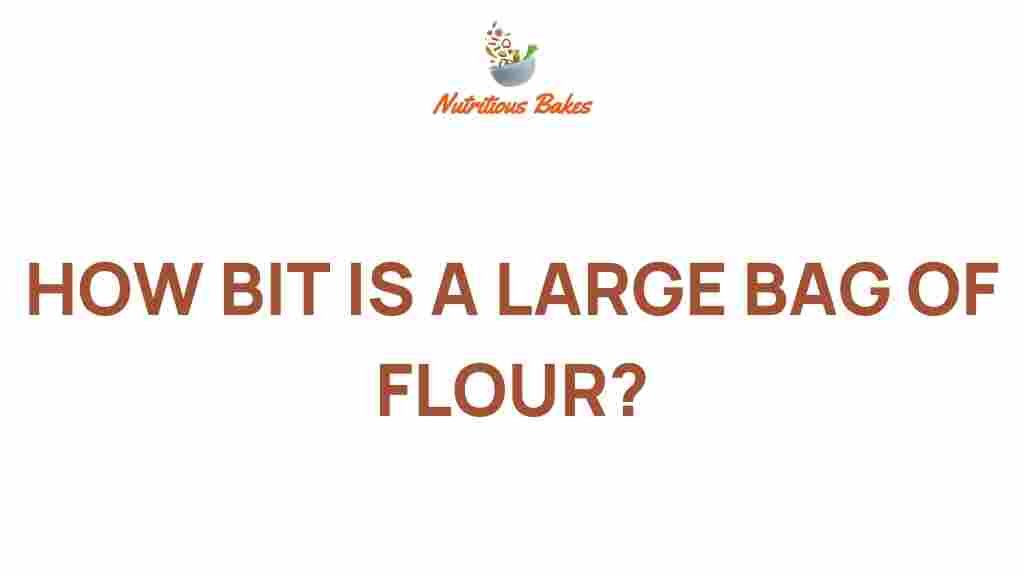Unveiling the Secrets: How Much Flour is in a Large Bag?
When it comes to baking, understanding flour quantity is vital for achieving the perfect texture and flavor in your baked goods. Whether you’re an experienced baker or just starting out, knowing how much flour you have on hand can make a significant difference in your culinary adventures. In this article, we will explore the amount of flour typically found in a large bag, how to measure it accurately, and provide essential tips to help you master your baking skills.
Understanding Flour Quantities
Flour is a pantry staple that comes in various types, including all-purpose, bread, cake, and whole wheat flours. A large bag of flour is typically a convenient option for avid bakers who frequently use this essential ingredient. But how much flour is in a large bag?
- A standard large bag of flour usually contains:
- 5 pounds (approximately 2.27 kg)
- 10 pounds (approximately 4.54 kg)
- 25 pounds (approximately 11.34 kg)
Many bakers prefer to buy flour in bulk, as it allows for cost savings and ensures you have enough on hand for your baking projects. The most common size found in grocery stores is a 5-pound bag, which is perfect for home bakers.
Cooking Measurements: How to Measure Flour Accurately
Accurate measurements are crucial when baking. The way you measure flour can significantly affect the outcome of your recipes. Here are some simple steps to ensure you measure flour correctly:
- Fluff the Flour: Use a spoon to stir the flour in the bag or container to aerate it. This helps to avoid compacting the flour.
- Use a Spoon: Spoon the flour into your measuring cup instead of scooping directly from the bag. Scooping can pack the flour, resulting in more than you need.
- Level It Off: Use a straight edge, like a knife, to level off the excess flour for an accurate measurement.
For precise cooking measurements, consider using a kitchen scale. One cup of all-purpose flour typically weighs around 120-125 grams, depending on how it’s measured.
Essential Baking Tips for Using Flour
Knowing how to handle flour is one thing, but using it effectively in your baking endeavors is another. Here are some culinary tips for incorporating flour into your recipes:
- Choose the Right Type: Different types of flour serve different purposes. For example:
- All-Purpose Flour: Versatile and suitable for most recipes.
- Bread Flour: Contains more protein, ideal for yeast breads.
- Cake Flour: Lower protein content for lighter, fluffier cakes.
- Store Properly: Keep your flour in a cool, dry place, preferably in an airtight container, to maintain its freshness.
- Check Expiration Dates: Flour can go stale over time. Always check the expiration date on the bag.
Common Troubleshooting Tips for Baking with Flour
Even the best bakers encounter issues while baking. Here are some common problems and their solutions:
- Too Dense or Heavy Baked Goods: This could be due to over-measuring flour. Always use the spoon-and-level method.
- Dry Dough or Batter: If your dough feels too dry, consider adding a bit more liquid or fat to balance the moisture.
- Sticky Dough: If your dough is too sticky, you can add a little extra flour, but do so gradually to avoid overdoing it.
What to Do with Leftover Flour
If you find yourself with leftover flour after a baking session, don’t worry! There are plenty of ways to use it:
- Baking Bread or Rolls: Use your flour to make homemade bread or rolls.
- Thickening Sauces: Flour can be used as a thickening agent for gravies and sauces.
- Making Pasta: Use flour to create fresh pasta from scratch.
Conclusion: Flour is Your Baking Companion
In conclusion, understanding flour quantity in a large bag and how to measure it properly is a fundamental skill for any baker. With the right knowledge and techniques, you can elevate your baking game and create delicious treats that your family and friends will love.
Remember to experiment with different types of flour and recipes. Keep your pantry stocked with this essential ingredient, and you’ll always be ready to whip up something wonderful. For more baking tips and recipes, check out our baking essentials guide.
Happy baking!
This article is in the category Ingredients and created by NutritiousBakes Team
